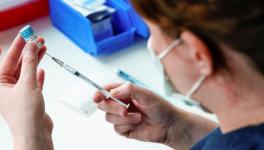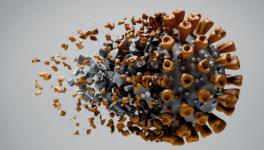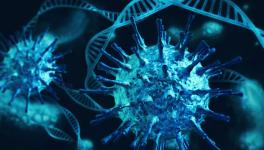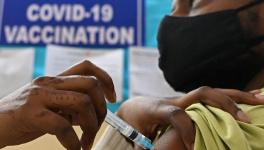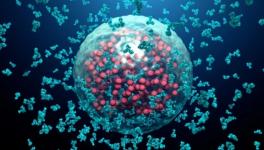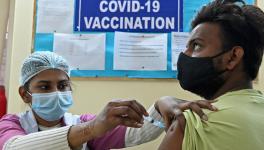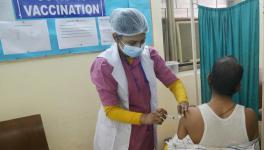Six Months of Pandemic: What Science Still Strives to Solve
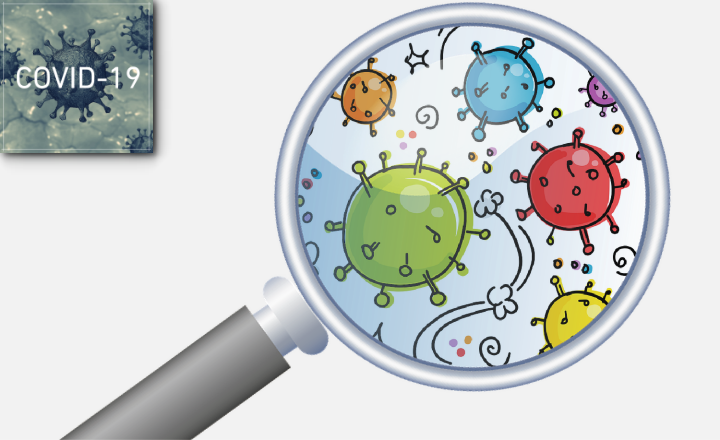
Image for representational use only.Image Courtesy : indiaBioScience
It has been six months since the world has been reeling under the COVID-19 pandemic. In many parts of the globe cases are surging up on a daily basis. Six months have gone past and with more than 1 crore cases and over 5 lakh deaths, the pandemic is the worst crisis in public health the world has seen in a century.
But, the pandemic has also led to research initiatives across the globe, which have proceeded with unprecedented speed to understand both the disease and SARS-CoV-2, the virus that causes it. Many aspects have been unfolded, starting with the genomic sequences which were found in China, to the way the virus enters into the human cell and hijack it, or the huge drug trials undergoing in different parts of the world.
However, for every new finding, a next set of questions emerge which need answers.
The Response Variability of People to the Disease
One hallmark of COVID-19 is that people respond differently to it—some will not have any symptom at all, while some display mild symptoms and there are some, who otherwise healthy, develop critical pneumonia that could be fatal.
Can genetic variation play a role? Or is it the kind of viral strain that hit a particular area? Surely, viral strains are known to show varied responses among people of different areas. But how genetics could play a trick as far as COVID-19 is concerned, still remains a matter of research.
The first strong evidence of genetic link to the disease response came out last month. An international team of many researchers reported that people showing critical respiratory response are likely to have one of two gene variants. The study extensively done on 4,000 people from Italy and Spain is available in medrxiv.
One gene variant, as reported in the study is in the region of the genome that determines the blood type—the ABO blood groups. The other gene variant could be the one encoding a protein that interacts with the receptor that the SARS-CoV-2 uses to get an entry to the human cell, or it could be one that encodes immune proteins linked to pathogen response.
The team of researchers are part of the global consortium to find genetic linkages to the disease, known as the COVID-19 host genetic initiative.
These gene variants, however, have a modest part in disease response. To search for gene mutation that have more profound role, Rockefeller University immunologist Jean Lorent Casanova and his team are looking for full genomes of people otherwise healthy and are under 50 years of age that have acquired severe form of COVID-19.
Another effort was made by Kari Stefanson, the chief executive of DeCODE genetics. His team has been busy in searching for human gene variant and the difference in response towards COVID-19. But, a significant result from this team is hampered pertaining to the less number of cases in Iceland. The team is based in Reykjavik.
Nature of Immunity and How Long It Can Sustain
For any kind of pathogenic attack that we experience, antibodies are developed by the immune system. These antibodies against a particular antigen help fighting further attack by that pathogen.
As far searching the nature of immunity against SARS-CoV-2 are concerned, efforts mainly have pointed towards finding neutralising antibodies that bind to viral proteins directly and thus prevent infection. It is found that neutralising antibodies are high for few weeks after the infection, but start to decrease afterwards. However, the antibodies can stay longer in the body in case of people who suffered severe infection. This was the case for the earlier SARS infection as well, some severely infected patients had the antibodies active even after 12 years of the infection, while some with less infection had lost the antibodies within few years.
Researchers still don’t have enough knowledge about the exact amount of antibody needed to prevent a second infection or at least attain lesser symptoms.
Immunity against SARS-CoV-2, very likely is to extend beyond antibodies. Studies have shown that T cells, an important arm of the immune system are also involved in providing immunity.
A clearer picture will emerge when different aspects of immune responses would be pieced together to see how durable is the immunity that these responses could provide.
How Worrying Are the Mutations?
Mutations are common in viruses. They can go on mutating as they go on infecting. Tracking mutations in SARS-CoV-2 has come out as a way the epidemiologists are tracing the global spread of the virus. But mutation studies are important for scientists as well, but with some different interests, that is to study whether certain mutations are linked to more lethality while others are less virulent.
Recently, a Cell publication said that a new strain of the virus has emerged and has now become dominant worldwide. While this new strain is more infectious in nature it is not linked to more virulence. The strain is a result of a point mutation, that is a single change, in the spike protein that was observed around February in Europe.
Mutations are also important for vaccine development. A vaccine is expected to be generic, meaning it should show effectiveness against different strains. But how exactly the mutations are influencing the disease spread and its virulence is still debated despite large efforts being underway to catalogue it.
What About the Effectiveness of a Vaccine?
The most important discovery that the world awaits is that of a vaccine against COVID-19. Probably, it is the most effective way to overcome the pandemic. Currently, there are almost 200 candidate vaccines that are being developed and near about 20 that are under various stages of clinical trials.
But the first large scale trials to look into the efficacy are yet to begin. These studies will assess the infection rates among people that get vaccine in comparison to those who receive a placebo.
But from the animal testing results some hints have already been revealed. The Oxford University vaccine candidate when administered to macaque monkeys showed that it could prevent the animal from developing more serious lung infections or pneumonia, but may not be able to prevent infection in other parts such as the nose. The vaccinated monkeys showed virus level in the nose similar to those unvaccinated. Results of this kind raises the question whether the vaccine would be able to stop the spread of the virus even if it prevents severe illness.
Scant data on humans showed that human body could produce neutralising antibodies that can directly block the virus from infecting, but how long those antibodies are available in the body is not yet known clearly.
Origin of the Virus
Despite heavy conspiracy theories, scientists now agree that SARS-CoV-2 originated in bats, specifically the horse shoe bats. A study conducted on 1,200 coronaviruses from bats in China also inferred that horseshoe bats in Yunnan are the origin from where the novel coronavirus emerged. Nevertheless, the chance the virus originating from horseshoe bats of neighboring countries like Myanmar, Laos and Vietnam was also not ruled out in the study.
Genetic analysis also suggested that the virus could have come to humans from bats via an intermediate species and in this case the most likely species is the pangolin. There are studies that show that coronaviruses in Malayan pangolins have 92% genomic similarities with the novel one. These studies suggest that the pangolins could have hosted an ancestor of the SARS-CoV-2.
While the bat origin of the virus is confirmed, there still remains a space, even though small, about confirming the involvement of the intermediate species.
Whether the Virus is Airborne:
In a recent letter to the WHO and world medical community, 239 scientists from 32 countries have urged to consider that the virus could be airborne. The letter reads—“We appeal to the medical community and to the relevant national and international bodies to recognise the potential for airborne spread of COVID-19. There is significant potential for inhalation exposure to viruses in microscopic respiratory droplets (micro droplets) at short to medium distances (up to several meters, or room scale), and we are advocating for the use of preventive measures to mitigate this route of airborne transmission. Studies by the signatories and other scientists have demonstrated beyond any reasonable doubt that viruses are released during exhalation, talking, and coughing in micro droplets small enough to remain aloft in air and pose a risk of exposure at distances beyond 1 to 2 m from an infected individual. For example, at typical indoor air velocities, a 5 μm droplet will travel tens of meters, much greater than the scale of a typical room, while settling from a height of 1.5 m to the floor”.
WHO also has considered the probability of airborne transmission and aerosol transmission of SARS-CoV-2, according to Maria Van Kerkhove, a technical lead on COVID-19 pandemic at WHO.
Get the latest reports & analysis with people's perspective on Protests, movements & deep analytical videos, discussions of the current affairs in your Telegram app. Subscribe to NewsClick's Telegram channel & get Real-Time updates on stories, as they get published on our website.









